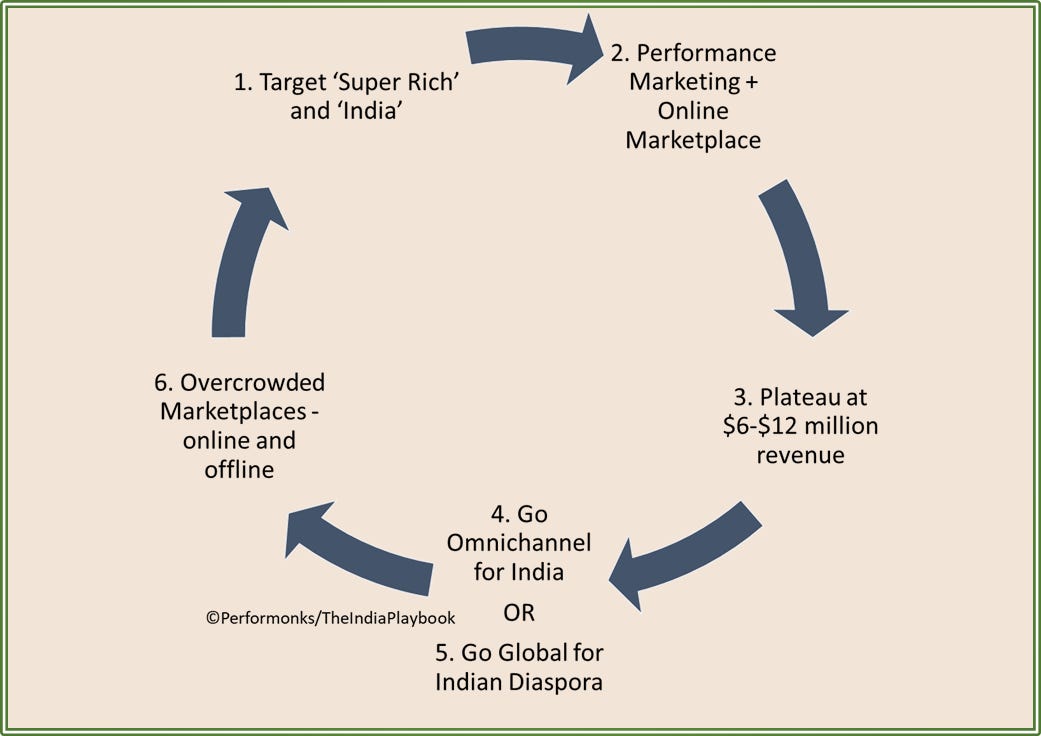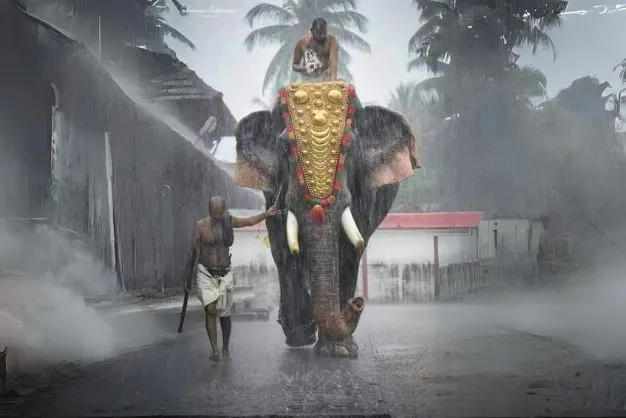“Competition is for losers”
-Peter Thiel, Source
Maybe idealistic. Maybe naive. But, I believe that a business needs to operate with the ‘category of one’ mindset to win and scale.
The last nine editions have established a shared understanding of the Indian market structure. This edition builds on that understanding – I landscape consumer-facing brands that follow a ‘category of one’ mindset.
Grab your cutting chai and dive in.
If you missed them, reading the previous editions will help (especially this, this, and this) before you read ahead. I’ll wait.
Done? Let’s start.
Two broad principles to keep in mind about the peculiarity of India:-
1) There are three main consuming segments
In descending order of per capita consumption –
- The top 1%. Let’s call them Super Rich. They travel the world, have international tastes, and experiment with lifestyles and products.
- The next 19%. Let’s call them India. English and vernacular speakers, upwardly mobile, they accommodate their aspiration to consume more within their cash flow constraints.
- And the next 40%. Let‘s call them Bharat. Vernacular speakers, cash-strapped, underexposed, prefer sachets and magic price points of 1/5/10, make frequent offline shopping trips.Share
2) India lags in the number of users, usage, and value metrics
India is a large consumer market in aggregate but lags behind the West and even China in all growth metrics.
- Users – the number of users of a category. Take a look at the penetration of consumer durables. Even a basic category like fans is absent in 20% of homes.

- Usage – the number of products we consume. Japanese women use up to 8 to 12 products for their skincare routine. The average Indian woman uses 2.
- Value – the quantity we consume and the prices we’re willing to pay. India’s per capita spending on beauty and personal care business is $12 (this is where China was in 2006-07). US, Europe, and Southeast Asia spend in the range of ~$30-35. (Source). Even consumer tech revenue lags behind other markets. In this tweet, Kunal Shah compared Meta’s monthly active users (MAU) from India versus the revenue generated.

Meta had 410 million MAUs in India versus 231 in the US, but India generated only $1.8 billion (₹15,000 crore) revenue, against the USA’s $40.7 billion (3.4 lakh crore).
Why does all this matter?
This matters because our obsession with speed-to-scale is creating a marketplace of sameness
We like to worship at temples of large idols. Even the statues we’ve been building lately are (literally) larger than life – the Statue of Unity of Sardar Vallbhbhai Patel stands at a grand 182, the world’s tallest.
In our scale-obsessed culture, ‘small’ feels like a failure at worst and a ‘lifestyle’ business at best. We are running a race of unicorn proportions – India produced 43 unicorns in 2022 and 111 in 2023. In the decades before, there were only 8.
Most D2C and consumer tech startups target the ‘SuperRich’ or ‘India’ segment because it’s relatively easier to scale to 50cr-100cr ($6MM-$12MM) through performance marketing and social ads for this audience.
Then to scale further, startups either target the Indian Diaspora (e.g. Vadham is going global), or add offline distribution (e.g. Mama Earth went omnichannel pre-IPO to bolster revenues).
But they don’t venture into ‘Bharat’ because they know that to win there requires a complete rework of the product-market fit.
This has led to an overcrowding of the creamy layer. Products jostle with each other on physical shelves and end up looking the same on virtual shelves (there are over 5,000 results for Vitamin C Face Serum on Amazon at the time of writing this).

This entire model is based on a mindset of a ‘finite’ game. A game that ends at valuation and exit.
But there’s a different game that can be played – an infinite game that builds legacy and enduring businesses. Nestle entered India in 1961. Unilever, even earlier, in 1931. These companies have taken multiple decades to build four-figure brands that serve all Indians.
To play an infinite game, we need a different mindset.
Why a ‘category of one’ mindset is the answer
James Carse, a New York University Professor Emeritus of religion and history, wrote Finite and Infinite Games. He said that finite games are defined by known players, fixed rules and objectives. Becoming ‘better than’ competition and getting the highest valuation fastest is the hallmark of a finite game.
When we go head to head against competition, we start apeing their playbooks. This becomes a race to the bottom. We match competition play-by-play – same consumer offers, similar benefit propositions, same keywords, and performance marketing. In the end, tactics like logistics partners, retailer margins, and shelf space are equalizers for all brands. The only way to win in any of these is to spend more. Soon enough, the price of ambitious growth becomes unaffordable.
What if, instead, meeting the revenue target were a finite game within the larger infinite game of serving consumers uniquely and earning trust with consumers and the ecosystem? Infinite games are those where we evolve with the situation, and our objective is not to win in the short term but to keep playing.
For consumer brands, this means building a category of one.
- Being unique enough that consumers remember.
- Being useful enough that consumers buy again.
- Building a business model and ecosystem that becomes self-sustaining.
There are many brands that are playing in a category of one.
I have attempted a framework to map these brands for their segment.
A WIP landscape of ‘category of one’ brands
At a very very high level, there are four main growth strategies for any market. In a market like India, with three diverse consuming segments, they will play out differently for each.
Look at this framework of D2C and consumer tech startups, mapped to the growth strategy and the consumer segment.

Strategies and examples could be.
- Unlock access to better products & benefits:
- upgrade to higher price points by offering better benefits or lifestyle – organic for India, artisanal bread for SuperRich, sugar-free chyawanprash for India
- add a product to an existing regimen – conditioner for Bharat, Vitamin C serum for India, night retinol oil for Super Rich
- upgrade from unorganized to organized: loose staples to packaged staples for Bharat and India, jewelry for India and SuperRich, agarbatti for SuperRich
- Bundle products & services in new ways: bundling services and products open up new market spaces and upgrade consumption. Urban Company and Lenskart bundle a service and product to offer convenience and meet a need.
- Serve an underserved user base with specific benefits: products and services for consumers with special needs – seniors, pet parents, etc.
- Build a community and then serve and monetize it: I think this might be the business model of the future. Cred is building a community of SuperRich, while Parentune is a community of parents and experts supporting each other through the toughest job on earth.
Thanks for reading. I would love your feedback and builds on this thought process!
